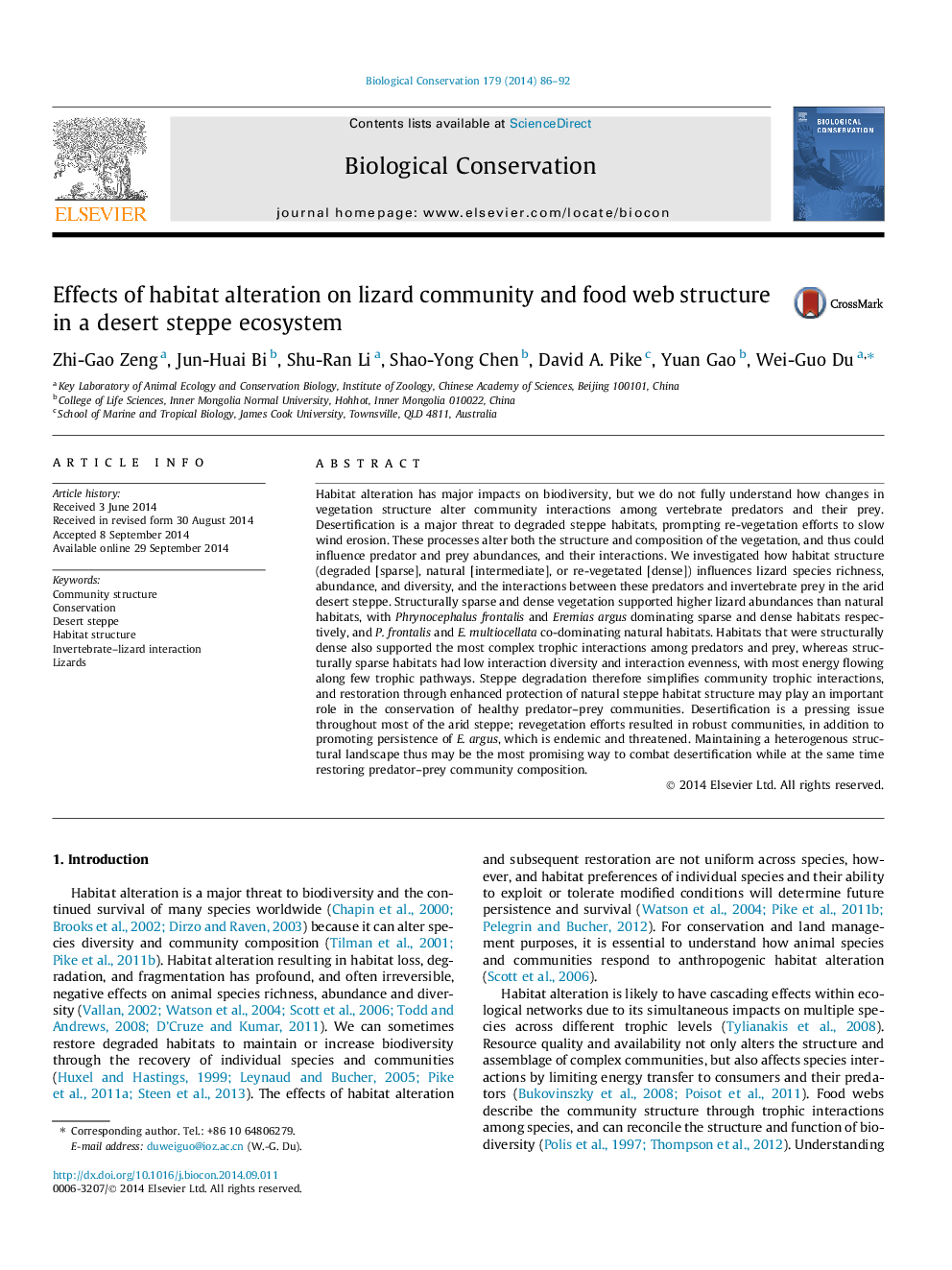| کد مقاله | کد نشریه | سال انتشار | مقاله انگلیسی | نسخه تمام متن |
|---|---|---|---|---|
| 6299949 | 1617922 | 2014 | 7 صفحه PDF | دانلود رایگان |
- We investigated how habitat structure influences lizard species richness, abundance, and diversity, and the interactions between these predators and invertebrate prey.
- Habitat alteration had little effect on species richness, but striking effects on species abundance and diversity.
- Habitat alteration markedly changed the structure of invertebrate-lizard food webs and the pathway that species interacted.
- Maintaining a heterogenous structural landscape may be the most promising way to combat desertification while at the same time restoring predator-prey community composition.
Habitat alteration has major impacts on biodiversity, but we do not fully understand how changes in vegetation structure alter community interactions among vertebrate predators and their prey. Desertification is a major threat to degraded steppe habitats, prompting re-vegetation efforts to slow wind erosion. These processes alter both the structure and composition of the vegetation, and thus could influence predator and prey abundances, and their interactions. We investigated how habitat structure (degraded [sparse], natural [intermediate], or re-vegetated [dense]) influences lizard species richness, abundance, and diversity, and the interactions between these predators and invertebrate prey in the arid desert steppe. Structurally sparse and dense vegetation supported higher lizard abundances than natural habitats, with Phrynocephalus frontalis and Eremias argus dominating sparse and dense habitats respectively, and P. frontalis and E. multiocellata co-dominating natural habitats. Habitats that were structurally dense also supported the most complex trophic interactions among predators and prey, whereas structurally sparse habitats had low interaction diversity and interaction evenness, with most energy flowing along few trophic pathways. Steppe degradation therefore simplifies community trophic interactions, and restoration through enhanced protection of natural steppe habitat structure may play an important role in the conservation of healthy predator-prey communities. Desertification is a pressing issue throughout most of the arid steppe; revegetation efforts resulted in robust communities, in addition to promoting persistence of E. argus, which is endemic and threatened. Maintaining a heterogenous structural landscape thus may be the most promising way to combat desertification while at the same time restoring predator-prey community composition.
Journal: Biological Conservation - Volume 179, November 2014, Pages 86-92
